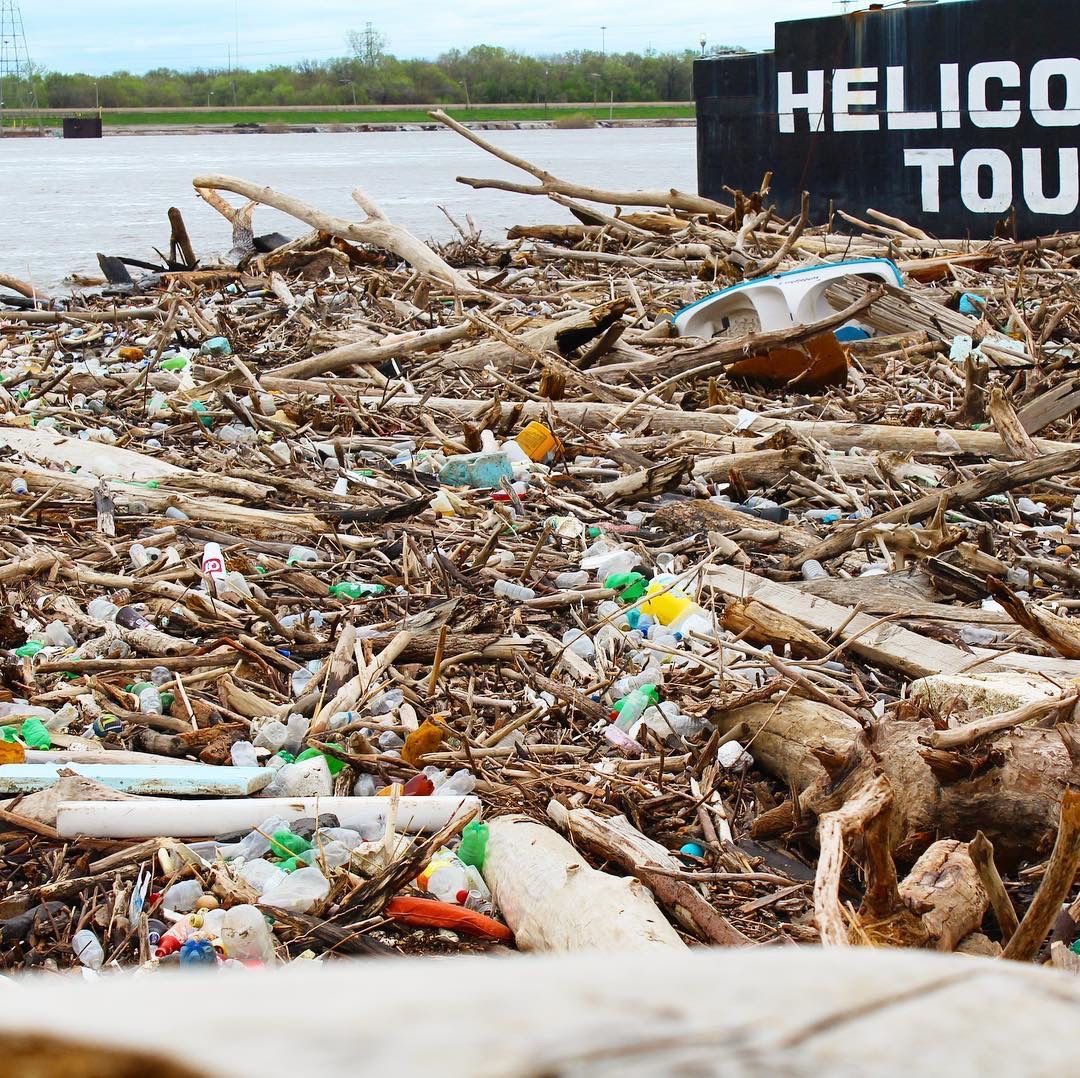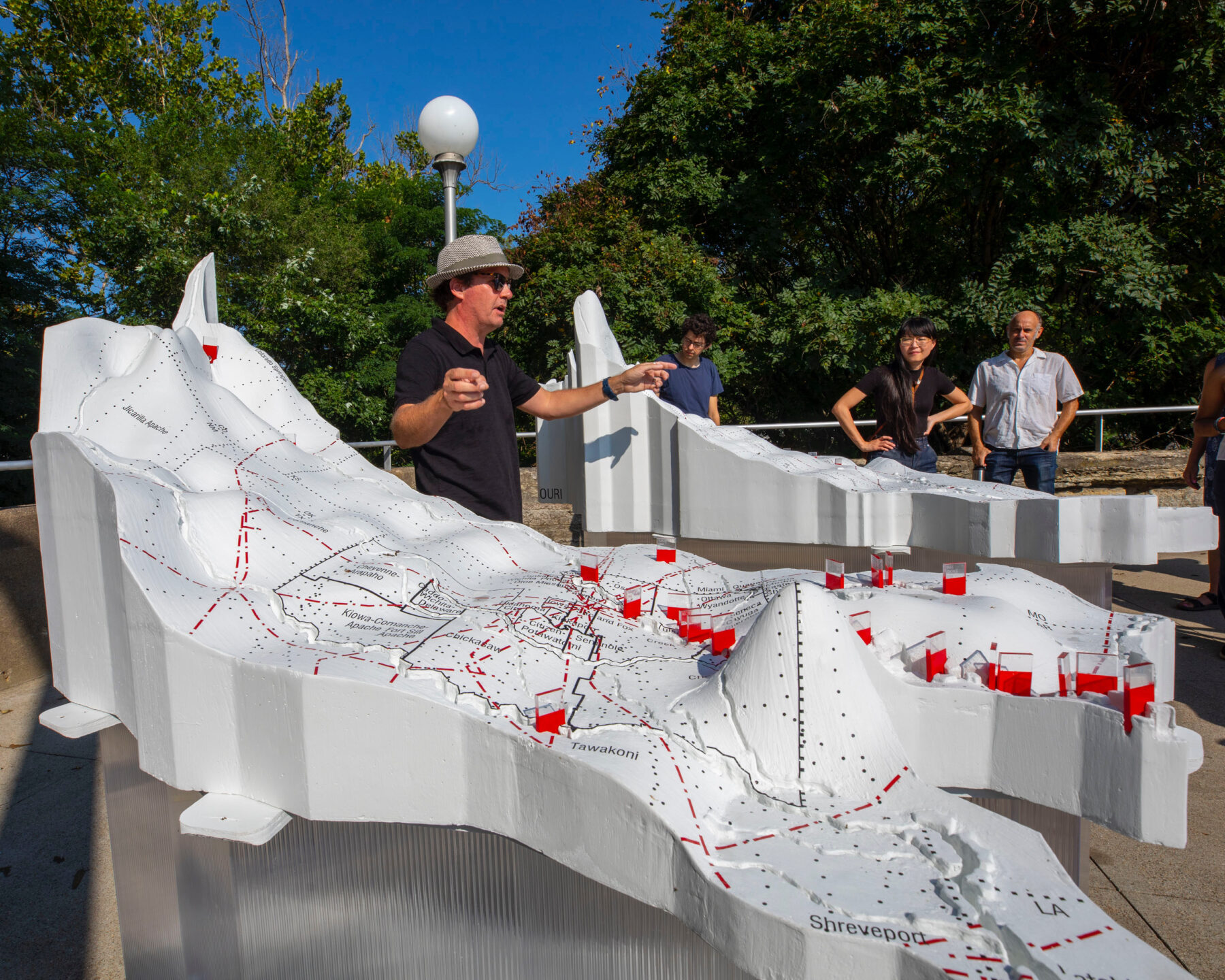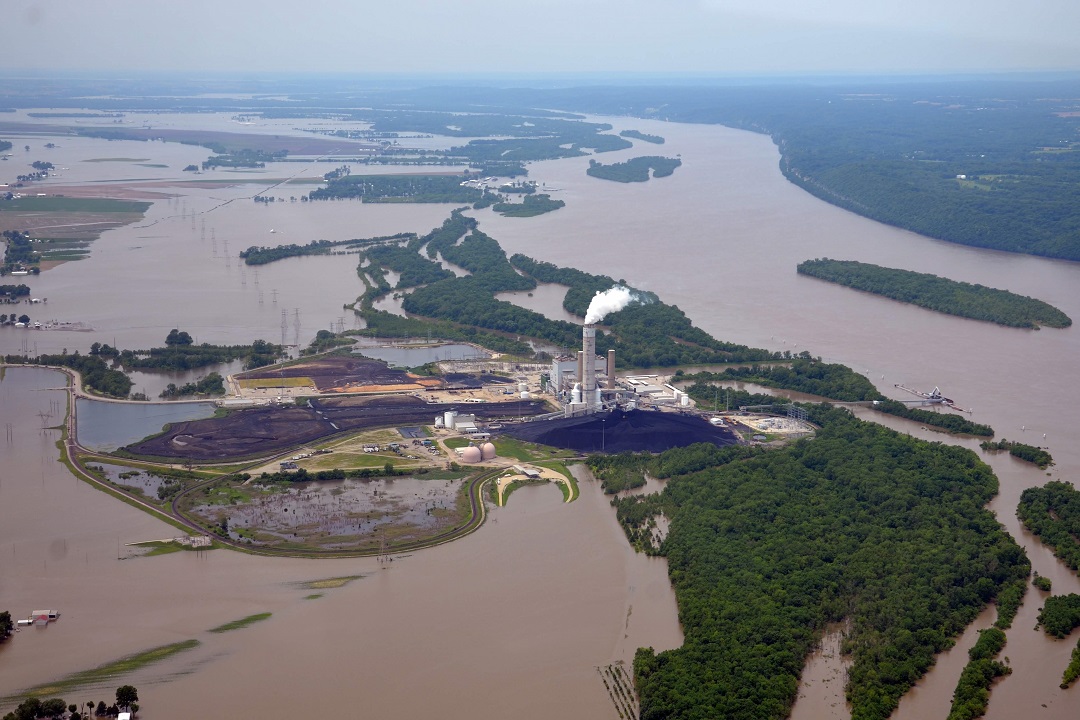It’s unlikely as many people think about the possible effects of climate change on a city beside a big body of water in Derek Hoeferlin’s current home, St. Louis, as compared to his previous one, New Orleans.
Hurricane Katrina raised questions about the viability of the Big Easy because the storm caused $125 billion in damage and more than 1,800 deaths. But according to Hoeferlin and others, the future of the river ecosystem surrounding St. Louis is equally uncertain.
Issues such as “climate change, the future of big agriculture and industry, the stresses on the river systems and the environment are happening up here, arguably, as explicitly as places in the Delta,” said Hoeferlin, associate professor and chair of the landscape architecture and urban design programs at Washington University.
Indeed, American Rivers, a national nonprofit dedicated to river conservation, has in the last two years declared both the Mississippi and Missouri as among the most endangered rivers in the United States. The organization’s detailed reports, which are available for review at americanrivers.org, site climate change, polluting industries, unsustainable development, and antiquated flood control systems as the primary causes.
While the vulnerability of life along the Mississippi and Missouri has not captured as much public attention as the future of New Orleans, Hoeferlin, American Rivers’ staff, and outdoor recreation leaders are among a growing number of people working to ensure that our waters remain sustainable for humans and animals.
“I think there are a lot of people out there who are interested in making change happen and doing things differently,” said Hoeferlin, whose latest book is titled Way Beyond Bigness: The Need for a Watershed Architecture.
—
While no weather event as dramatic as Katrina has recently happened in Missouri, in the spring of 2019, record flooding along the Arkansas, Mississippi, and Missouri rivers affected nearly 14 million people, according to the Center for Disaster Philanthropy, and caused billions of dollars in damage to farms, infrastructure, and river barge traffic, among other casualties.
That catastrophe and other floods are complicated by efforts to control the river with levees and dams, say river conservationists. While federal law requires that at least 3,000 feet of the Missouri River be allowed as floodway, the waterway has been constricted to as narrow as 600 feet in some places to accommodate development, says American Rivers’ “America’s Most Endangered Rivers 2021” report.
“The changing climate is having an impact on all of this,” said Rachel Bartels, representative of Missouri Confluence Waterkeeper, a local conservation organization. But “it’s not the only thing. There is the levee situation and human development and people trying to build higher walls and obstructions, and then that has an impact on people downstream.”

Rachel Bartels collects a water sample.
Flooding has forced organizers of the annual Missouri River 340 (MR340), an internationally renowned canoe and kayak race across Missouri, to postpone the event numerous times since its launch in 2006.
“I don’t know if [the flooding] is the new normal or what, but it certainly makes putting races like this on more difficult,” Scott Mansker, founder of the MR340, said in 2019.
Local conservation organizations have also raised concerns about pollution from coal, farm fertilizers, microplastics, and pharmaceuticals.
“Changes in precipitation are exacerbating flooding — carrying more pollution from farm fertilizers, sediment, and other pollutants off the land and into the river,” states American Rivers’ “America’s Most Endangered Rivers 2022” report.
—
Groups such as Missouri Confluence Waterkeeper have in recent years raised concerns about the power company Ameren Missouri discharging coal ash from its Sioux Energy Center into the floodplain adjacent to the Mississippi and Missouri rivers. In January, the Environmental Protection Agency denied the utility company’s request for an extension to comply with regulations concerning disposal of the ash.
Craig Giesmann, Ameren senior manager of environmental services, describes himself as a hunter and fisher and said it’s “critically important to us that we do the right thing for the environment, the surrounding communities, and our customers.”
But pollution and flooding continue to have an impact. The flooding in 2019 forced the state to close conservation areas throughout Missouri, including Columbia Bottom Conservation Area in Spanish Lake, where people enjoy fishing and other waterborne activities.
Bartels spends at least two days a week on the rivers when it’s not too cold and monitors for pollution that includes “funny smells, dirty water,” oil slicks and sheens, and “visible signs of dumping.”
She also sees people fishing every time.

Garbage and pollution on the Mississippi River in downtown St. Louis.
Water pollution impacts people who fish for fun as well as those who “rely on that as a food source,” said Bartels.
In addition, flooding affects paddlers who use areas such as Columbia Bottoms as a launch point — including local businesses like Big Muddy Adventures, which has offered guided trips from the site.
“It definitely has an economic impact beyond just damage to buildings and homes,” said Bartels.
Then there is the effect of flooding and pollution on wildlife — and the people who enjoy watching birds and other animals.
“The Mississippi River is a critically important global migration corridor for more than
325 bird species, dozens of migratory fish, and even pollinators such as the monarch butterfly,” states the American Rivers report. “Unsustainable development that drains wetlands, disconnects floodplains, and confines the dynamic Mississippi River contributes to the global extinction crisis.”
—
Despite the frustration of people like Hoeferlin, Bartels, and Mansker with the management of rivers, they still believe there are ways to repair the damaged waterways. To achieve large solutions, such as changing the way governments control rivers with levees and dams and closing coal plants, one of most important steps, they say, is inspiring more people to care about the sustainability of the rivers.

Derek Hoeferlin displaying a model of the Mississippi watershed. (Hadley Fruits; Exhibit Columbus)
Mansker has people come from as far away as Australia to participate in the MR340 and see the river and its wildlife. “It’s just this perfect little piece of nature that’s in our backyard, and most people don’t even know what’s there beyond what they see when they go over a bridge,” he said.
Those who participate in the MR340 and other local paddling races and events “have gotten very engaged on this issue, so I would love to see more of that,” said Bartels. “I would love to see a change in attitude, an awareness that the rivers aren’t dirty, scary rivers [but a] beautiful opportunity to recreate.”
Hoeferlin regularly leads his Washington University students on paddling trips around St. Louis with Big Muddy Adventures and to sites in Louisiana such as the Old River Control Structure, which regulates the flow of the Mississippi River and is comprised of four massive concrete and steel structures that were engineered with the help of Dr. Hans Albert Einstein, son of the famous Albert Einstein.
“I really want [the students] to be aware of this larger system and how the cities and the communities are all protected by it — or sometimes other communities may be affected in negative ways,” said Hoeferlin.
His goal is to “optimistically bring as many people on board [to realize] the need for more nature-based systems and climate-adaptive ways of moving the whole system and the whole watershed forward.”
How You Can Help
If you would like to learn more about the health of our rivers and how you can assist in advancing solutions for clean water, check out the following organizations and events:
1Mississippi – Established in 2009 by the Mississippi River Network to organize people dedicated to protecting the Mississippi River into a national constituency of River Citizens. River Citizens live in all 50 states, take simple actions to improve the river and advocate for river protections to local and national decision makers. 1mississippi.org
Earth’s Classroom – Dedicated to using experiential education to advance awareness, understanding, and appreciation of ecology, cultural history, and their interrelationship. Organizers of the Bourbeuse Bluebell Race, “a good ole fashioned race on Missouri’s most crooked river”. earthsclassroom.org
Greenway Network – Its mission is to conserve natural resources, encourage sound management of the watersheds, and protect the quality of life for the residents of the greater St. Louis area. Host of Race for the Rivers, which runs from Weldon Spring or the Klondike Boat Ramp near Augusta, Missouri, to Blanchette Landing in St. Charles. greenwaynetwork.org
Living Lands & Waters – Headquartered in East Moline, Illinois, Living Lands & Waters is an environmental nonprofit that aids in the protection, preservation, and restoration of the natural environment of our nation’s major rivers and their watersheds. livinglandsandwaters.org
Missouri Confluence Waterkeeper – The Missouri Confluence Waterkeeper is a grassroots, citizen-led conservation organization focused on clean water and dedicated to protecting fishable, swimmable, drinkable water for all Missourians. missouriconfluencewaterkeeper.org
Missouri River Relief – Founded to engage individuals and communities along the Missouri River in the exploration, enjoyment, restoration, and care of the river through education, stewardship, and recreation. Organizers of the Missouri River 340 (MR340) endurance paddle race from Kansas City to St. Charles. riverrelief.org
Stream Teams United – Dedicated to advancing the protection and improvement of Missouri’s waterways through education, advocacy, and stewardship efforts. Partner, along with the MO Humanities Outdoors program, in the Paddle MO series of educational and recreational river trips. streamteamsunited.org
The Open Space Council – Founded in 1965, the Open Space Council works independently and collaboratively to conserve and sustain land, water, and other natural resources throughout the St. Louis region. openspacestl.org
Author: Eric Berger is a regular contributor to Terrain Magazine.


Leave A Comment